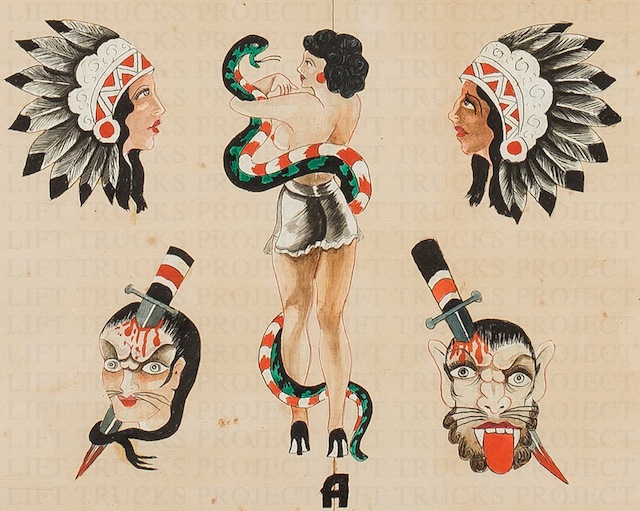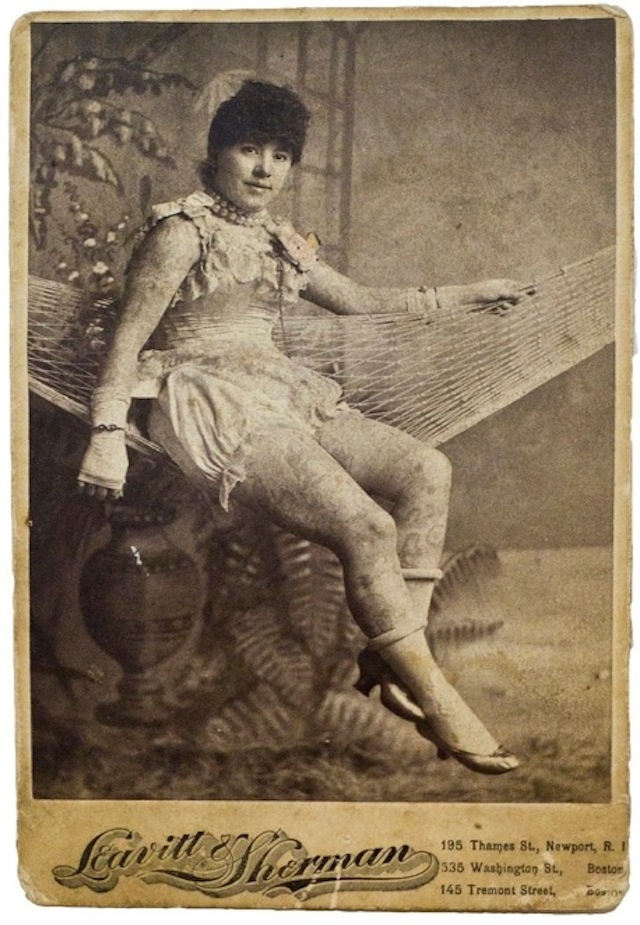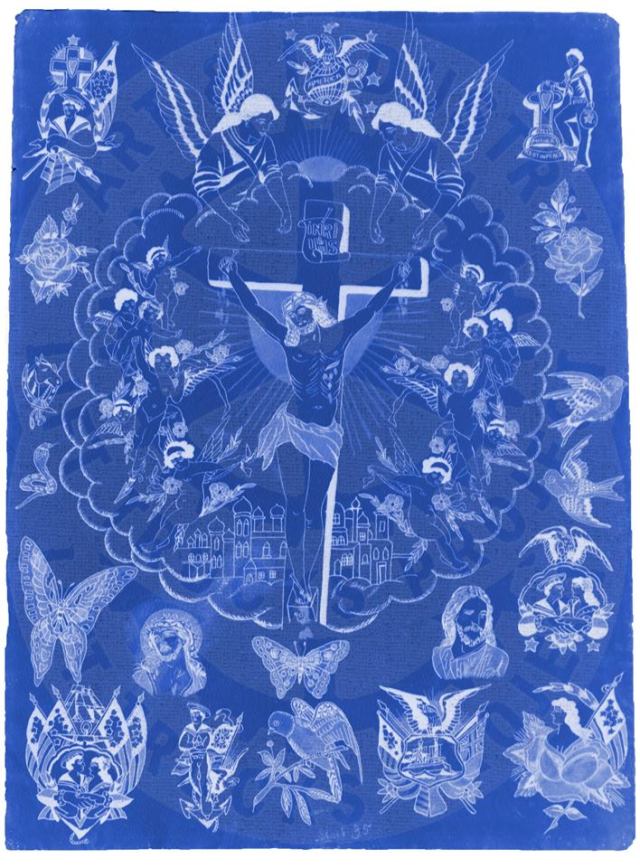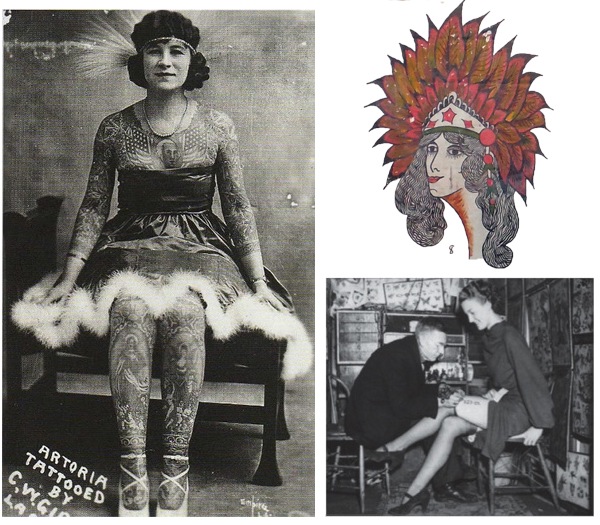Tom,
California seems to be a fish net for just about everything under the sun, from storage facilities full of valuable items for pennies to being filled with street bums with colorful backgrounds like some sort of whacky catch net. Phil Sparrow wound his last days out in California in his book store before his last roundup in a care facility. Nice place to visit but I don’t think I would want to stay for any real length of time or you can easily get sucked into the vacuum of one extreme or another.
That post of my letter has netted me some reward thank you very much. I have been helping Bert Grimm’s Grand Niece with as much as I can feed her on the book she has been working on for years now, a real Encyclopedia Britannica of the history of many early American Tattooist’s, just an incredible wealth of documented information. Most all consumer literature to date has been, for the most part, coffee table reading single paragraph “stuff” but this is a reference book/item that will survive as “The” tattoo reference book of all time concerning the turn of the 20th Century tattooers and then some, all backed up with reference and documentation. Amazing to hear from her how many have shunned her for information, I’m not at all surprised but if they could only understand the magnitude of what she is doing and how much she has gathered, they would be rushing to get on the bus as a contributor.
She has spent so much time searching micro fish in libraries, phone directories, news accounts, obituaries, census reports, etc. etc, that she has become very knowledgeable in “fact” and gathering year by year whereabouts of many of the tattoo legends. The photo’s she has dug up are incredible, some if not all from their teen years to mid life to old age and of those nobody has photo records of. Life accounts in court documents to grave sites.
I have seen some of what she has compiled and I can’t wait for it to go public through publication.
On another note, all is starting to slumber around the U.S. with the bologna season of the midwest and the excuse of the economy, some shops are reporting how slow things are and I’m convinced of it being geographical and the excuse of the economy is just that, with people saying how tight things are but they just bought the new I phone and pay regularly for energy drinks and large latte chi’s with tuxedo’s, ha! Others report the business never being better but as to the “trend” of tattoos, Lyle Tuttle said it best when he told me “Lets face it, tattooing has shot it’s load”, ha!
This crazy evolution of tattooing in America is really something, and when I speak of evolution, I’m talking about how it truly evolves. For instance, the biker subculture who were once the mainstay from the 60′s to the 80′s has been replaced with the “new and improved” checkbook biker who watches Gangland episodes to become schooled arm chair consultants of the biker lore on something not at all what it once was, where the biker sub culture was the poorer people without a real job gaining identity through their iron machines and actions, they are now indentured servants to the monthly Harley payment and the credit card that they work so hard to pay off and yet show up every day to a job to keep the high interest payment made on the bike and yet watch their 401 K pay less than that interest. But they are still the evolved crowd whom tattooers can rely on and have become a good staple of income for all. It’s so funny to think that Justin Beeber has been the musical host in 2010 of Saturday Night Live when Bob Marley was once the host, makes ya wanna say “whahhh? Idunno, it jez, ah, I dunno….” but just what kind of progress is this? I watched “2001 a Space Odyssey” awhile back and laughed at how much they missed their mark, way off but you can remember how colossal that movie was and how prophetic it was acclaimed at that point in time.
Used to be I would have to worry a bit about what was about to enter the door of my shop, a drunk, a whore, a sailor, but now it’s Dad dragging in his Daughter and her friend with their cell phones to their ears like they could be talking to each other ( I call them left handed blinders) and Dad informing me how they just had their 18th birthday, Hah! It’s just to crazy to clarify or define in psychology, it definitely defies any recorded chapters in psychology. It is fun and entertaining but the “It’s not just for sailors anymore” has tweaked a bit, yes Doctors and Lawyers are getting tattooed but so is the guy who didn’t make the grade from medical school and only got as far as an EMT “professor” at the local community college yet married a Doctors assistant who can get scripts for their friends of Vicodin so the tattoo won’t hurt during the tattoo application is in reality the evolved drunk from yesteryears gone by. I really hope that made sense to you Tom.
The evolution of anything and everything will always be unpredictable, I don’t think Johnny Rotten could ever have predicted Green Day as “Punk Rock”, it is again something consumer envied, then recognized by corporate to then be groomed an marketed at WalMart, arghh! Like Thomas Nast could never for see Doonsebury.
I had a beauty today, had all the tell tale marks, home made hand poke marks to the latest trailer park tattoo arhteist, she wanted her deceased Ex Boyfriends nickname “Dirty” on the inside of her hip, whether she was aware that whomever was going to look upon her area of the left ovary bare necked to read “dirty” was of no concern of mine, ha! But at the same time, I savored the moments with that which was bliss. Makes a person wonder if those that Jesus claimed “Know not what they do” were those defined as having abnormal brains, but as to this one, if Jesus don’t love’em I sure do! Rather those than the dramatic emulating the reality programs, you would suspect that the average viewer of the “Ink” programs may feel that tattoo’s were for cancer survivors or those who lost a family member to such, if for only once they would just have some guy stroll in wanting a, lets say a peacock, for no reason whatsoever than he wants a peacock, they show him first filling out forms of privacy disclosure, liability release and payment in advance and the only thing he sez while getting tattooed is “I can’t wait to get outside so I can have a smoke”, now that would be reality but wouldn’t sell Viagra during a commercial break. I am still in awe that nobody from any of the motorcycle manufacturers have figured out that they should advertise through the Orange County Chopper, Sons of Anarchy, and Gangland episodes, weird huh? You would think that the marketing experts would figure that one out,
Anyhow, getting late and tomorrow the witching hour will bring (and I’m not saying that my Mother in Law is planning a visit, although I’m sure her broom is working fine) Halloween! Oh, and thanks for the pumkin art, amazing! But Halloween is the only night that I can get away with “Yer Keith Richards right?” with the reply, “No man, I’m a zombie!” Ha!
Love ya Tom and have a Happy Halloween!
Sincerely,
-Hawk-


















































